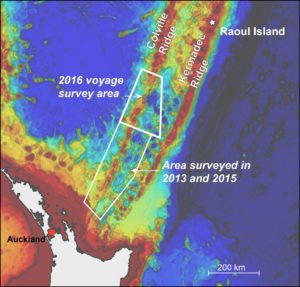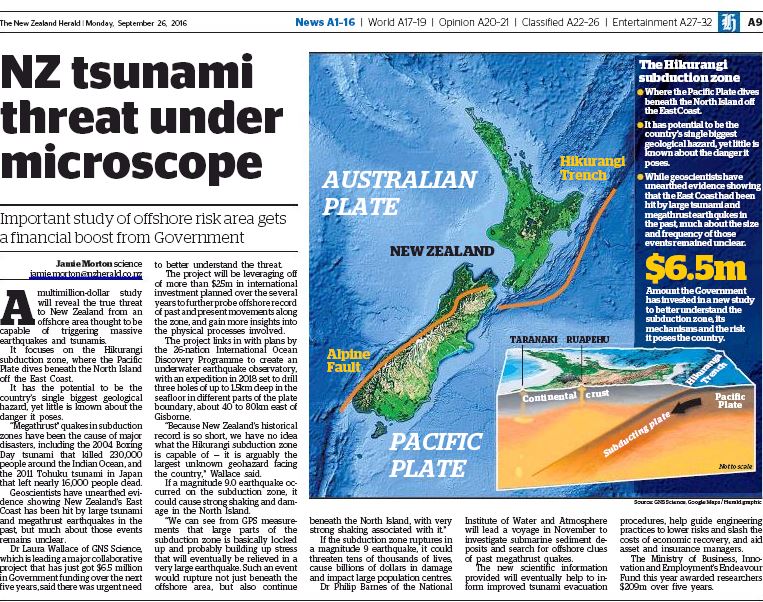GNS Science will lead a multi-million dollar study investigating the Hikurangi subduction zone and what danger it might pose to New Zealand.

NZ Herald science reporter Jamie Morton highlighted the study, which has received $6.5 million in funding from the Government’s Endeavour Fund.
The scientists will examine the Hikurangi subduction zone, where the Pacific tectonic plate plunges beneath the Australian plate. Such zones have the potential to generate ‘megathrust’ earthquakes like the 2004 Boxing Day tsunami and the 2011 Tokohu earthquake and tsunami in Japan.
GNS Science’s Dr Laura Wallace told the NZ Herald that because New Zealand’s historical record is so short “we have no idea what the Hikurangi subduction zone is capable of – it is arguably the largest, unknown geohazard facing the country”.
Meanwhile, today GNS Science researchers set out on a 21-day voyage to map a previously uncharted section of the Colville Ridge – a large and mountainous seafloor structure about 500km northeast of Auckland which has formed from the Pacific plate subducting under the Australian plate.
Aboard Niwa’s deepwater research ship, Tangaroa, the team will build on two earlier voyages. They hope to better understand the tectonic evolution of New Zealand’s underwater estate.
